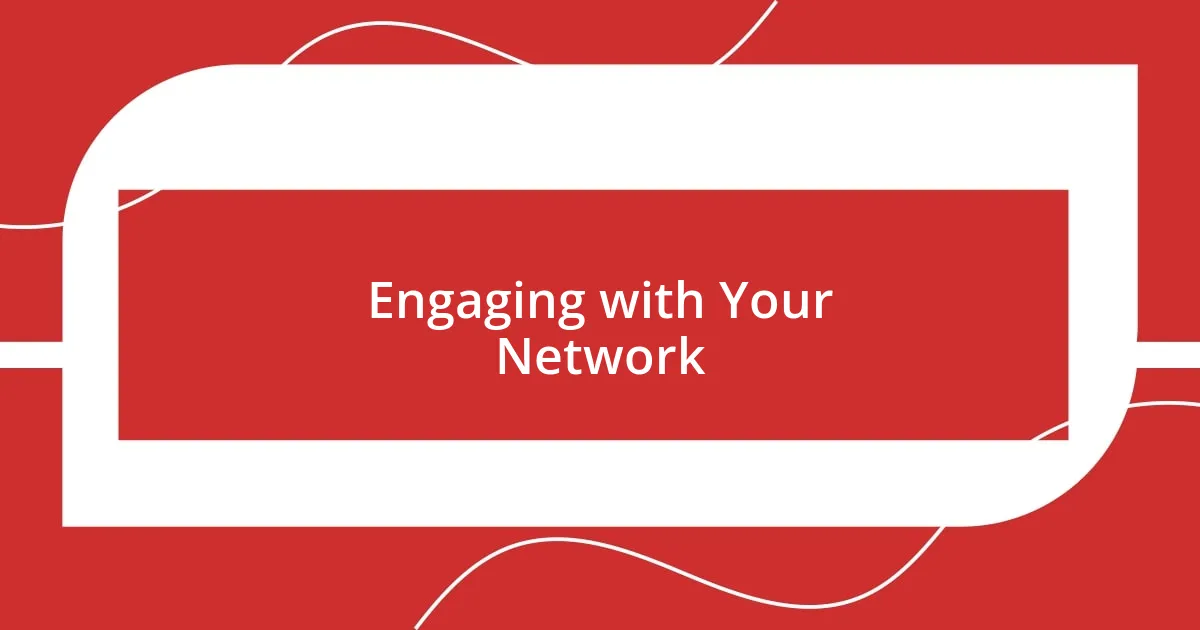Key takeaways:
- Participating in a fundraising run creates a strong emotional connection, driving motivation through personal commitment to a cause.
- Selecting a meaningful cause enhances motivation and community engagement, particularly when it aligns closely with personal experiences.
- Engaging your network through personal updates and social media is essential for building support and fostering community, amplifying fundraising efforts.
- Reflecting on the experience and sharing stories strengthens personal growth and creates deeper connections with fellow participants.

Understanding the Fundraising Run
Participating in a fundraising run isn’t just about physical endurance; it’s an emotional journey as well. I remember when I first signed up; my stomach twisted in excitement and anxiety. Why was I doing this? Beyond the physical challenge, I aimed to support a cause close to my heart, and that realization sparked a deeper connection to my efforts.
The atmosphere at these events is electric. When I arrived, the buzz of anticipation was tangible, and it reminded me of the community spirit that often goes unnoticed in our day-to-day lives. It made me reflect on how powerful it is to come together for a collective purpose. Have you ever felt that rush of unity in a crowd? It’s something special that fuels my passion for fundraising runs.
As I crossed the starting line, I couldn’t help but feel a swell of pride. Each step I took echoed the support from friends and family—and the countless individuals who would benefit from our efforts. This blend of personal commitment and shared motivation is what truly defines a fundraising run. It’s a reminder that every mile endured translates into tangible help for those in need.

Choosing a Cause to Support
Choosing a cause to support is a pivotal step in my fundraising journey. For me, it wasn’t just about picking a random charity; it was about finding a cause that resonated deeply with my experiences. A few years ago, a close friend faced a health crisis that revealed the flaws in our local healthcare system. That experience opened my eyes to the importance of supporting organizations that advocate for better access to healthcare. It’s amazing how personal experiences can guide our decisions and fuel our motivations.
When selecting a cause, consider these factors:
– Personal Connection: Reflect on causes that are meaningful to you; your passion can inspire others.
– Impact: Look for organizations that have proven results or clear missions you want to support.
– Community Needs: Think about the issues faced in your local area; addressing these can forge stronger community bonds.
– Awareness: Choose a cause that not only needs funding but also benefits from increased awareness and advocacy.
Involving myself with a cause that aligns with my values has made my participation in fundraising runs all the more powerful. When you feel the heartbeat of a cause, each mile you run feels infused with purpose.

Creating a Fundraising Plan
Creating a fundraising plan requires careful thought and organization. I remember spending a Saturday afternoon brainstorming my strategy, tapping into my creative side. It wasn’t just about setting a goal; it was about envisioning the journey ahead. Having a clear fundraising target kept me motivated, as I could visualize each milestone along the way. What were your fundraising goals? Establishing these early on can guide your actions and decisions.
I found that breaking down my plan into achievable steps was incredibly helpful. I noted everything from potential sponsors to community events where I could promote my run. For instance, I reached out to local businesses and offered them visibility in exchange for their support. My enthusiasm often sparked interest, leading to partnerships I hadn’t anticipated. Have you ever reached out to someone and discovered unexpected support? Those connections can make all the difference.
Lastly, tracking progress and adjusting the plan as needed is crucial. I set up a simple spreadsheet to monitor donations and gauge the effectiveness of my outreach efforts. It was inspiring to see funds coming in and the growing support from my network. By reviewing regular updates, I could tweak my approach, ensuring I remained on target. Creating a flexible plan not only kept me organized but also reinforced my commitment to the cause.
| Key Components | Actions to Take |
|---|---|
| Define Goals | Set clear, measurable fundraising targets. |
| Develop Outreach Strategy | Identify potential sponsors and partners. |
| Monitor Progress | Track donations and adjust strategies as needed. |

Engaging with Your Network
It’s so important to keep your network engaged throughout the fundraising process. I found that personal updates, like sharing a photo or a short video while training, really brought my community along for the journey. Have you ever noticed how a simple story can inspire others to join in? Those moments of connection can turn casual supporters into enthusiastic advocates.
One approach that worked well for me was hosting small gatherings. I organized casual meet-ups where I shared my plans for the run and explained how the funds would directly help the cause. It was gratifying to see my friends get excited—many even offered to join me or help spread the word. In those moments, it became clear that engaging with my network was not just about fundraising; it was about building a community rallying around a shared purpose.
Another critical aspect was leveraging social media. I made it a point to share my progress, from milestones achieved to challenges faced. The personal touch in my posts led to heartfelt comments and additional donations. I often wondered, how can one post create a ripple effect? That’s the beauty of engagement; it has the power to amplify your goals far beyond your immediate circle, bringing new supporters into the fold and fostering a sense of collective effort.

Promoting Your Fundraising Efforts
Promoting your fundraising efforts can be a game-changer. I recall one day when I decided to create a vibrant flyer highlighting my cause and upcoming run. It felt exhilarating to see my enthusiasm captured on paper! I hung those flyers at local coffee shops and community boards, and I can’t tell you how many conversations sparked from that simple action. Have you ever experienced that moment when someone stops to ask about your cause because of something as straightforward as a flyer? It’s truly magical.
Social media also became my ally in spreading the word. Each time I posted about my training runs or shared a motivational moment, it wasn’t just about updates; it was a chance to connect with my audience. One day, I shared a heartfelt story about why this run mattered to me—it was about a friend who faced a tough battle. That post resonated deeply and led to unexpected donations and support. I often wonder how sharing personal stories can touch hearts. It’s incredible how a little vulnerability can really amplify your message.
Another effective method I utilized was partnering with local influencers. I reached out to some people in my community who had a substantial following and shared our shared commitment to the cause. When they posted about my run, the engagement skyrocketed! Their reach opened doors to a new audience, broadening my fundraising reach exponentially. Have you considered who in your network could help extend your message? Those partnerships can create a ripple effect, transforming a personal effort into a communal movement—it’s about leveraging the collective power of your connections.

Reflecting on Your Experience
Reflecting on my experience during the fundraising run brought a mixture of emotions to the forefront. One particular moment stands out: as I crossed the finish line, I was overwhelmed by the cheers from friends and strangers alike. It sparked a thought—did my hard work truly inspire this level of support? That moment encapsulated what I had worked toward; it wasn’t just about my physical accomplishment but also the community I had built along the way.
Taking time to think back on the journey, I realized the significance of the small victories. Every mile completed in training, each dollar raised, all contributed to a larger cause. I often sat down to journal about my feelings—how initially I doubted my ability to even participate, let alone fundraise. Can you relate? That self-reflection turned into motivation, reminding me that every step and every conversation mattered.
I also found it valuable to connect with fellow participants and hear their stories. Sharing experiences created a bond that was deeper than just the run itself. It made me realize how collective experiences can lead to personal growth. Have you ever shared a challenge with someone and felt an immediate connection? That common ground turned my reflective moments into a source of strength, and I’ll forever cherish those relationships that blossomed in the spirit of giving.















